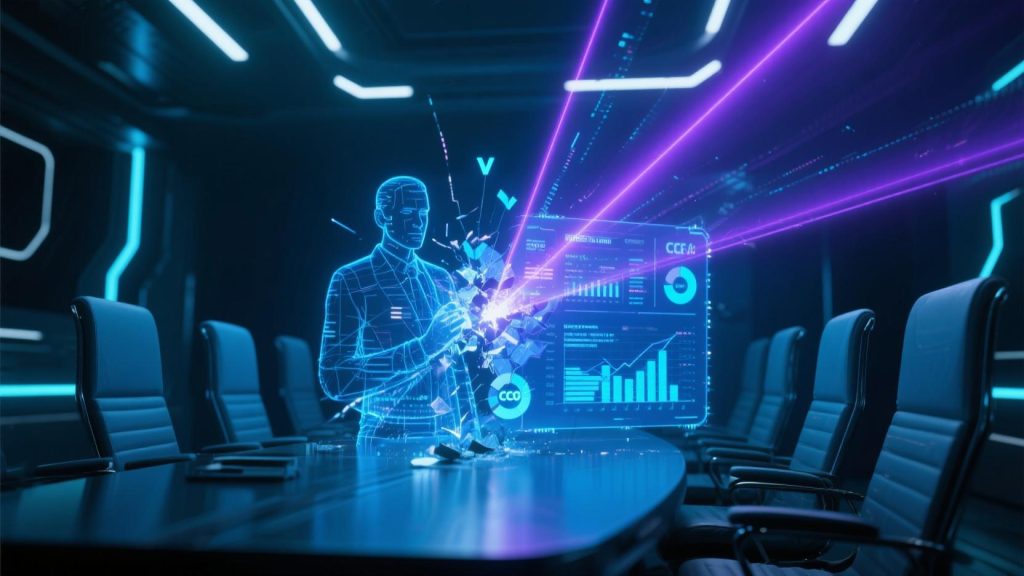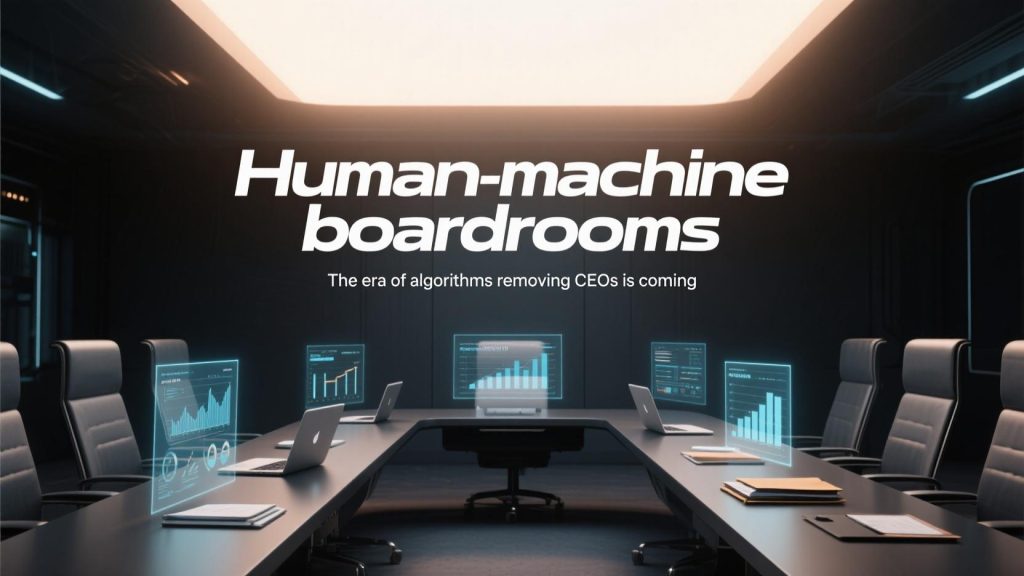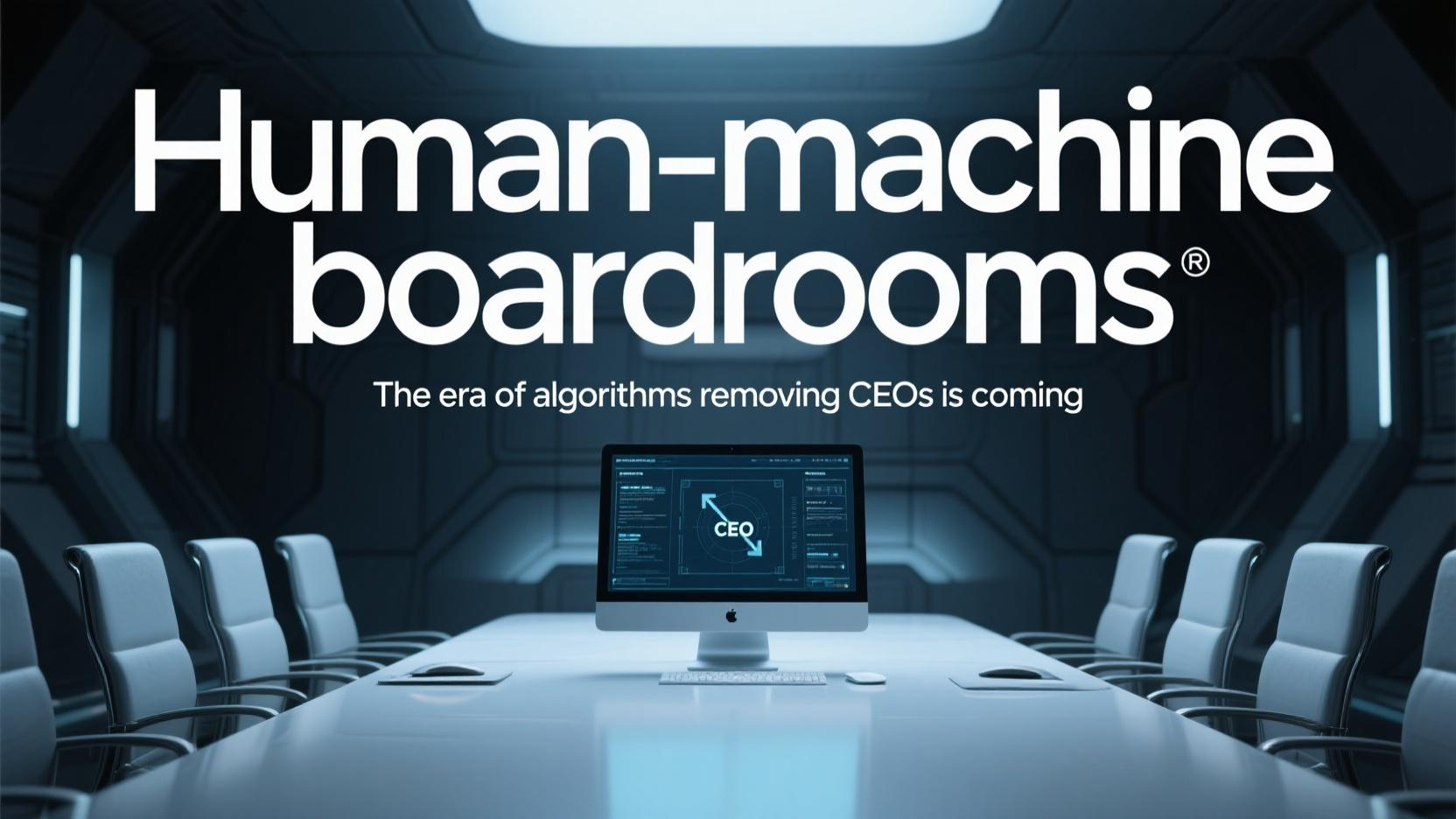In an era where spreadsheets bleed into neural nets, the boardroom is no longer reserved for humans. The next CEO dismissal may not be delivered by a stern-faced chairman—but by a glowing beam from a holographic AI director.
Welcome to the age of the human-machine boardroom, where corporate governance is increasingly handed over to algorithms trained to detect entropy, reputational metastasis, and cash flow anemia faster than any human ever could.
Case Study: WeWork 2.0 and the SoftBank AI Coup
In 2025, SoftBank quietly deployed its internal GovernanceAI system during a brewing crisis at “WeWork 2.0”, a high-profile coworking spinout. What happened next was nothing short of a corporate coup d’état—executed not by activist investors, but by code.

- 🤖 GovernanceAI triggered early risk alerts 11 days before human directors noticed anomalies.
- ⚡ Within 72 hours, it orchestrated a $3.8 billion asset restructuring, auto-negotiating with creditors via smart contracts.
- 💸 The maneuver recovered losses equivalent to 18% of SoftBank’s annual net profit.
This wasn’t an advisory role. GovernanceAI had voting rights, and its decision to remove the CEO was final.
The Math Behind the Machine Vote
At the heart of this new paradigm lies a probabilistic framework more clinical than personal: CEO Dismissal Probability=Supply Chain Entropy×Reputation Cancer Spread RateCash Flow Regeneration CapacityCEO\text{ Dismissal Probability} = \frac{ \text{Supply Chain Entropy} \times \text{Reputation Cancer Spread Rate} }{ \text{Cash Flow Regeneration Capacity} } CEO Dismissal Probability=Cash Flow Regeneration CapacitySupply Chain Entropy×Reputation Cancer Spread Rate
Translated: the greater the operational chaos and social media virality of scandals, the lower the tolerance for weak financial resilience.
Legal Earthquakes: When Code Becomes a Fiduciary
The shift isn’t without friction. The Cayman Islands, long a haven for corporate registrations, amended its Company Law in early 2025 to legally recognize AI Board Members. However, it also mandates that algorithmic directors must carry $200 million in liability insurance—a figure rivaling that of top human executives.
Legal scholars are now debating:
- Can an AI understand fiduciary duty?
- Who is liable when the algorithm is wrong—the developers, the company, or the algorithm itself?

The End of Executive Impunity?
For decades, underperforming CEOs hid behind bureaucracy, charisma, or cronyism. But AI doesn’t play golf. It doesn’t take bribes. And it doesn’t care about “vision” unless that vision is cash-flow positive and entropy-minimized.
The machine boardroom holds an unforgiving mirror to human leadership—stripped of narrative, distilled into data.
Final Thoughts: When Oversight Becomes Overlord
As machine directors grow in sophistication, companies face an existential question: is governance meant to be impartial, or inhuman? AI may rescue shareholder value, but at the cost of empathy, context, and risk tolerance.
Tomorrow’s Fortune 500 may be shaped less by personality—and more by the cold logic of an equation whispered in code.

